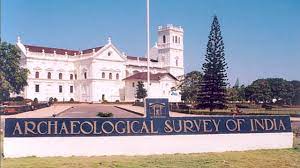
1.What do we mean by Indian Heritage ?
India, often referred to as the “Land of Diversity”, is renowned for its rich cultural heritage and historical significance. This South Asian country is home to numerous languages, religions, and ethnic groups, each contributing to the vibrant tapestry of Indian society. From the snow-capped peaks of the Himalayas in the north to the sun-kissed beaches of Goa in the south, India’s geographical diversity is as varied as its cultural landscape. The country’s arts, literature, and culinary traditions have left an indelible mark on the world stage. Furthermore, India’s contributions to science, mathematics, and philosophy continue to influence global thought and innovation. This multifaceted heritage, steeped in thousands of years of history, continues to shape and define the identity of modern India.
2.Authorities responsible for securing Indian heritage :
The preservation and promotion of Indian heritage are overseen by several key authorities. The Archaeological Survey of India (ASI), operating under the Ministry of Culture, is primarily responsible for archaeological research and the conservation of ancient monuments. The Ministry of Culture itself plays a pivotal role in the preservation and promotion of Indian culture and heritage. Additionally, each state in India has its own Department of Archaeology, which takes care of the archaeological sites within its jurisdiction. These organizations collectively work towards the protection and conservation of India’s rich and diverse heritage, guided by various laws and regulations enacted for the safeguarding of historically significant sites across the country.
3.Archaeological Survey Of India :
The Archaeological Survey of India (ASI) is a crucial government agency under the Ministry of Culture.The agency is responsible for the upkeep of ancient monuments and archaeological sites of national importance. It also oversees all archaeological activities in the country as per the provisions of the Ancient Monuments and Archaeological Sites and Remains Act, 1958, and the Antiquities and Art Treasure Act, 1972.
The Archaeological Survey of India (ASI) is allocated a budget by the Indian government for its operations. For the fiscal year 2023-2024, the provisioned outlay for ASI is Rs. 1102.83 Cr, which is an increase of 2.08% compared to the budget estimate of Rs. 1080.34 Cr for the fiscal year 2022-2023.
4.Where ASI is lagging for protection of Indian heritage :
It faces several challenges. Limited funding and resources often hinder the ASI’s conservation efforts.Environmental factors such as air and water pollution also threaten the integrity of historical structures.Rapid urbanization poses additional challenges, making it difficult to conserve buildings and cities of historic importance. The ASI also grapples with the issue of “missing” monuments, with 92 centrally protected monuments declared as “missing” by the Comptroller and Auditor General of India.
These challenges highlight the areas where the ASI could potentially improve its efforts in preserving and protecting India’s rich cultural heritage.
5.How can ASI improve for protection of Indian Heritage:
The Archaeological Survey of India (ASI) can enhance its efforts in preserving Indian heritage by implementing several strategies. Firstly, it could rationalize and categorize the list of centrally protected monuments based on their national significance, unique architectural value, and specific heritage content. This would allow for prioritization of monuments that reflect Indian ethos and culture. Secondly, the ASI could consider making the rules around the 100-meter prohibited area and 300-meter regulated area around ASI-protected monuments more flexible to alleviate inconveniences for local communities. Thirdly, the ASI could focus on developing preservation plans for all its work, particularly before excavations. It could also focus on documenting findings, conserving artifacts, and restoring structures while minimizing any impact on the site’s integrity. Fourthly, the ASI could consider using advanced technologies like LiDAR, ground-penetrating radar, and 3D scanning for excavations. Fifthly, the ASI could work towards addressing the shortage of human resources for conservation work and advocate for increased funding for monument protection and upkeep. Lastly, the ASI could implement regular physical surveys and the maintenance of digital logbooks to track the condition and location of all centrally protected monuments. These improvements could significantly enhance the ASI’s efforts in preserving and protecting India’s rich cultural heritage.
6.How can we contribute in protection of our Indian Heritage:
Individuals can play a significant role in the preservation of Indian heritage. One of the key ways is through education and awareness. By learning about the importance of our cultural and historical environment, we can develop a harmonious relationship with it1. This can be achieved by visiting heritage sites, reading about them, and participating in heritage walks and talks1.
Another way is through sustainable tourism. The ticket price paid to visit heritage sites contributes to their maintenance, while also providing employment opportunities for locals2.
Supporting organizations that work towards the conservation of cultural heritage, such as the Indian National Trust for Art and Cultural Heritage, can also make a difference1. These organizations often rely on donations and volunteers for their operations.
Lastly, the use of technology can also aid in the preservation of heritage. For instance, individuals can use social media platforms to raise awareness about the importance of preserving cultural heritage.
